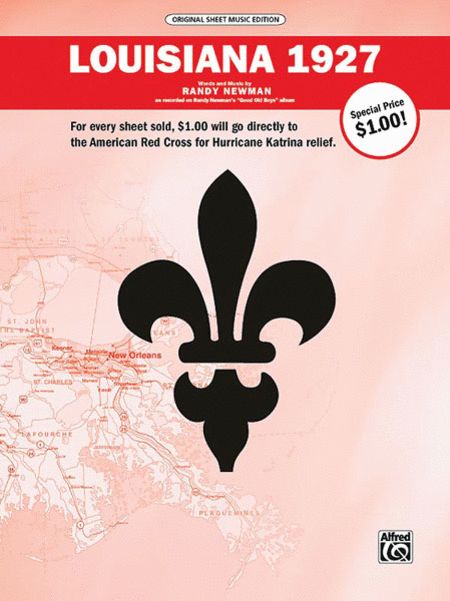A newscaster stands in a street that, while mostly devoid of cars, seems to be something of a thoroughfare for foot traffic. The sky is gray; there is water pooled along the side of the road. The man begins to detail the flood warning in effect in Baton Rouge from where he’s standing in Tiger Bend: there’s bumper to bumper traffic on the roads, he says, don’t leave your home unless you’re evacuating, and if you have to question whether or not you should evacuate then you should probably get out right about now. “Flood Emergency” flashes in red at the bottom of the screen.
But no one is really paying attention to the newscaster.
There’s a boy in the background, and he’s dancing. Eyes can’t help but watch the preteen freestyling behind the newscaster. As the reporter urges people to stay in their homes, the boy pops up behind his shoulder; as the reporter explains how necessary it is to evacuate before it’s too late, the boy comes back shaking with his arms out and knees bent. He’s not wearing any headphones, and there’s no music; he’s dancing to a song that isn’t playing. The newscaster continues with his live broadcast.

The boy doesn’t look to be more than 10 years old at most. “Whose kid is this?!?!” reads a comment on the posting of the now-viral video. “Was feeling kind of down, then he popped up on my screen and reminded me that no matter what you’re going through… just keep on smiling and dancing.” Admittedly, it’s hard to keep smiling and dancing in Baton Rouge and in surrounding areas right now, as the waters from a freak flood take their toll on families who—in many cases—didn’t have much if any forewarning to evacuate, but the boy has become something of a phenomenon: carefree, open, and unabashed in the face of natural disaster, his dancing is as heartening a sight as anyone could’ve hoped to see on a newscast flood update.
I was around this dancing boy’s age back when Katrina hit. There had always been something so exciting about hurricanes: school was canceled, the sky turned gray, the power went out, the water rose and the entire yard became a playground. The bayou would inch its way closer to our backdoor but I was never worried about flooding, because we had never flooded before and, with a naïve assurance, I knew we never would.

Katrina, as she has a reputation for doing, ruined all of that. My family evacuated and came back to a house that had flooded and molded, to belongings that were no longer ours but were instead the property of mildew and rot, and to a new life: one in a FEMA trailer, where we stayed for years as we fought with insurance companies for the money we needed to rebuild.
I don’t know how long it was after Katrina that Randy Newman’s “Louisiana 1927,” a song originally written about the 100-year flood of the Mississippi during Coolidge’s presidency, became the unofficial anthem of our most devastating hurricane and our efforts to rebuild the region. The first time I heard it after the flood, its soft, simple and sad melody silenced all conversation, and I looked over to see my uncle—in town from Chicago for the first time since the storm—trying and failing to covertly wipe away his tears. It began to play in earnest across the state, and for years after Katrina, there wasn’t a dry eye in the audience when it was heard. “Louisiana… Louisiana…” the refrain sweeps through the crowd whenever it’s sung, “They’re trying to wash us away… They’re trying to wash us away.”

I was about this dancing boy’s age when Katrina made landfall, but it has been 11 years since the destruction of that hurricane ripped through the south. The phenomenal dancing boy didn’t see the infamous hurricane descend upon his home, force his family to leave their state, and wreak havoc on the world around him. And that, I think, is as it should be for as long as it can be—a world in which the idea of a flood or hurricane warning is more cause for excitement than fear, when it’s just a gray sky and a bit more water and the dread of pain and of loss doesn’t press down on you quite so insistently.
There’s something beautiful in that.
And it’s something I lost in 2005. When Hurricane Isaac hit, seven years to the day after Katrina had, there was a fear in me that hadn’t existed before. Such a small hurricane, it came up the river as if it knew exactly which potential path would cause the most destruction to the most people. My family didn’t evacuate immediately, and—right before my eyes this time—the water began to seep into my home all over again, pushing its way under the doors and sneaking in under the brick. Laughing through the big storms had become impossible for me.
This past Sunday, I saw the video of the dancing boy and I wished him the best.
But then Monday, a video of a woman being rescued from her flooded car filled my newsfeed. As the rescuers—three residents in their private boat, making their rounds in a waterlogged neighborhood—busted into this woman’s floating convertible and dragged both her and her small dog to safety, I noticed the location: Tiger Bend Road. The same area where the small boy had been dancing the day prior was now under about six feet of water. I cheered for the woman and her dog, for the men who had come to rescue her, for the LSU purple-and-gold life vest they threw out to her as she struggled to swim. But my heart broke for the neighborhood, for the drowned homes, and for the child from the viral newsclip.

The dancing boy, who certainly lived in the area surrounding Tiger Bend, had likely seen—in the hours following the shooting of his now-famous video—his own home sinking into the flood. At the very least, he had seen much of his neighborhood submerged. It’s hard to dance through that.
And now I’ve begun to see this boy’s video being shared outside of the context of the flooding. Voices from various recordings applaud the boy’s dancing while ignoring the context of the broadcast and the enormity of the flooding happening right now in southeast Louisiana, and people too far removed from the region share it in amusement without acknowledging—and perhaps without even realizing—that this boy dances in the face of disaster. But it is this fact that makes his carefree and hilarious freestyling a touching reminder of the capacity of people—and of kids in particular—to find something worth smiling about, even in the face of destruction.
The flooding in this boy’s neighborhood and across much of the southern state has not yet ceased, and “Louisiana 1927” is already making a comeback. Originally written about a devastating 100-year flood, the song is well-suited to describe this shocking and sudden flood which—89 years after the historic overflowing of the Mississippi River—similarly arrived with little warning and overtook areas of Louisiana normally considered no-flood zones. “Some people got lost in the flood,” the song’s singers croon, “Some people got away all right.”
Thankfully, very few people have been physically lost in this flood, but that doesn’t mean that everyone is “all right.” Parts of Louisiana never before subjected to flooding have been submerged, and with that, a whole lot has been lost: not just homes, material belongings, and iconic symbols of the state, but a sense of security and a basic belief in the stability of the world.

It’s a loss I wish we residents of southeast Louisiana weren’t continually forced to endure.
It’s a loss I especially mourn for the younger ones, who—like the dancing boy—are facing a disaster that may prove jarringly transformative.
And yet it’s a loss we have together learned to bear, to understand, and to rally against. “They’re trying to wash us away,” sings Newman in his now-iconic song. “They’re trying to wash us away.”
But we’re Louisianans.
We’re still here, despite it all. And we refuse to be washed away by anything―freak floods and hurricanes alike.
